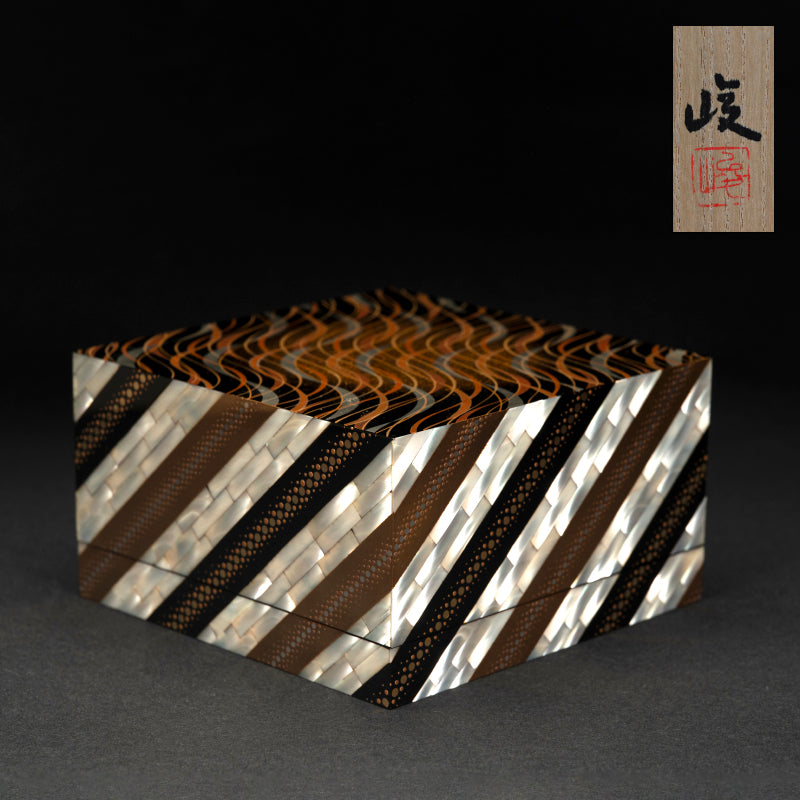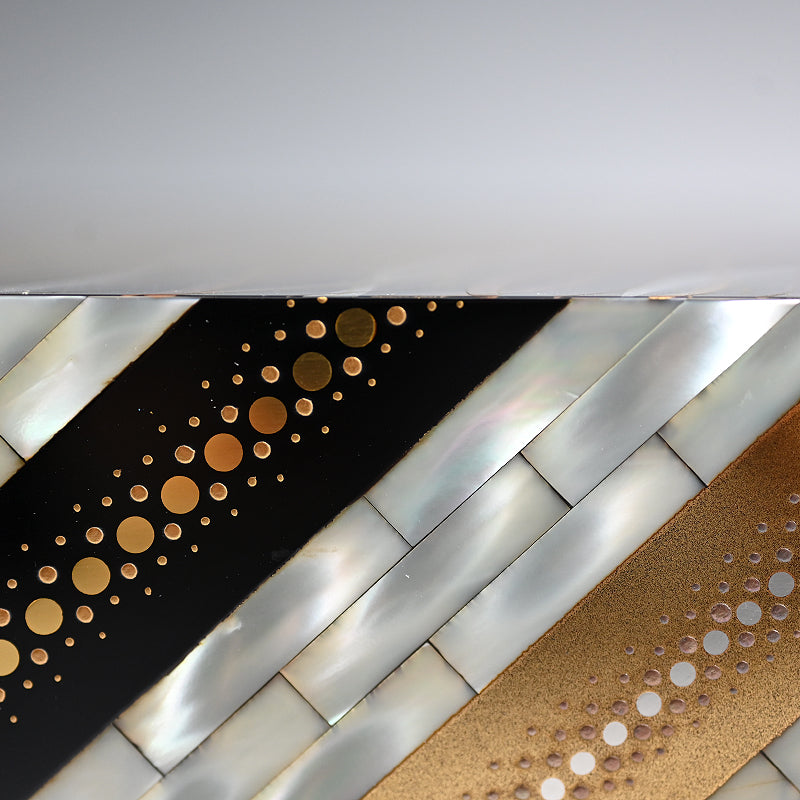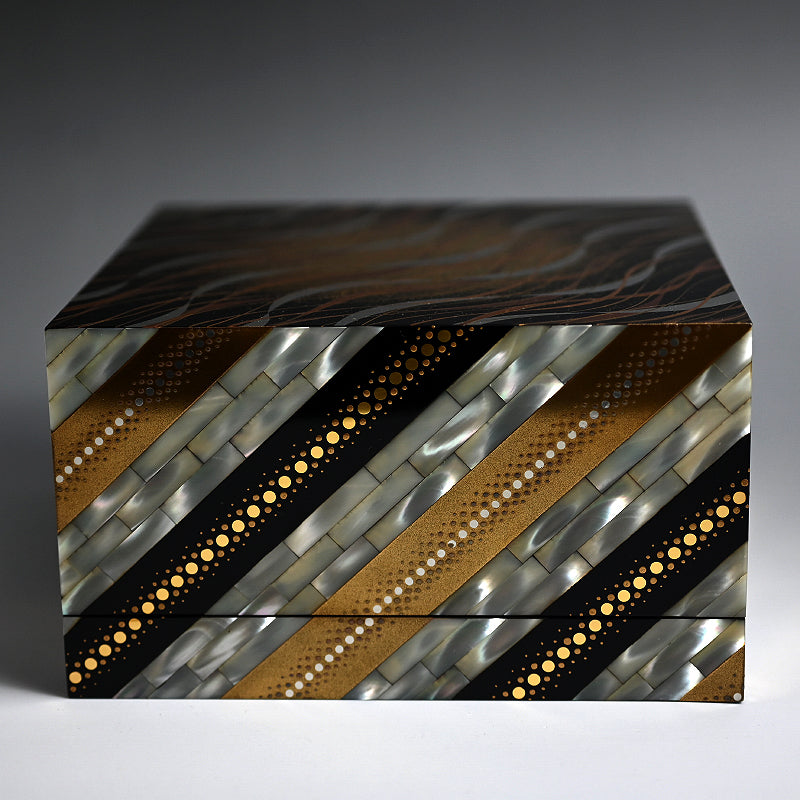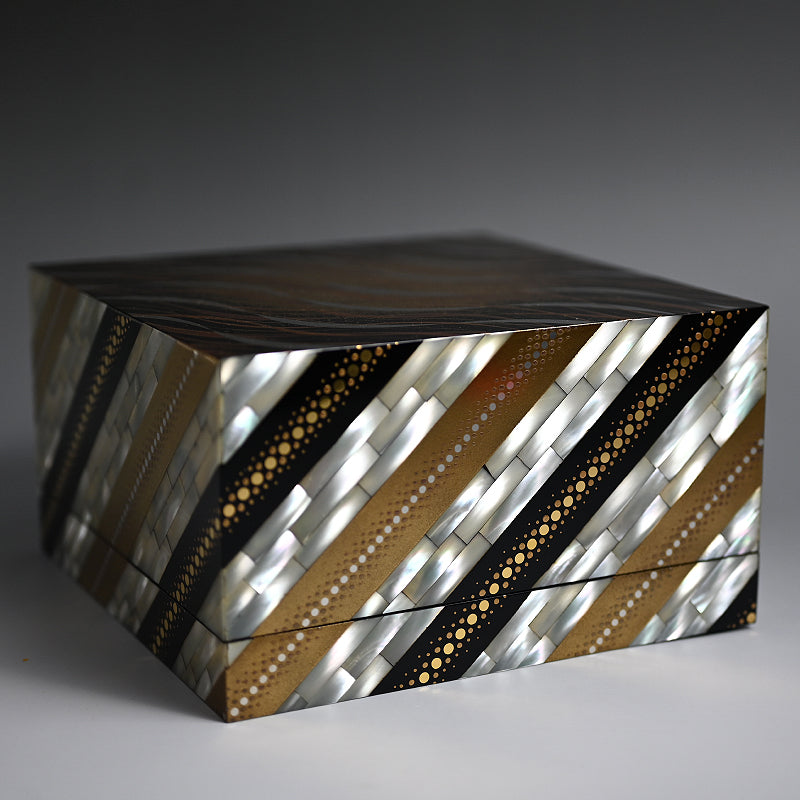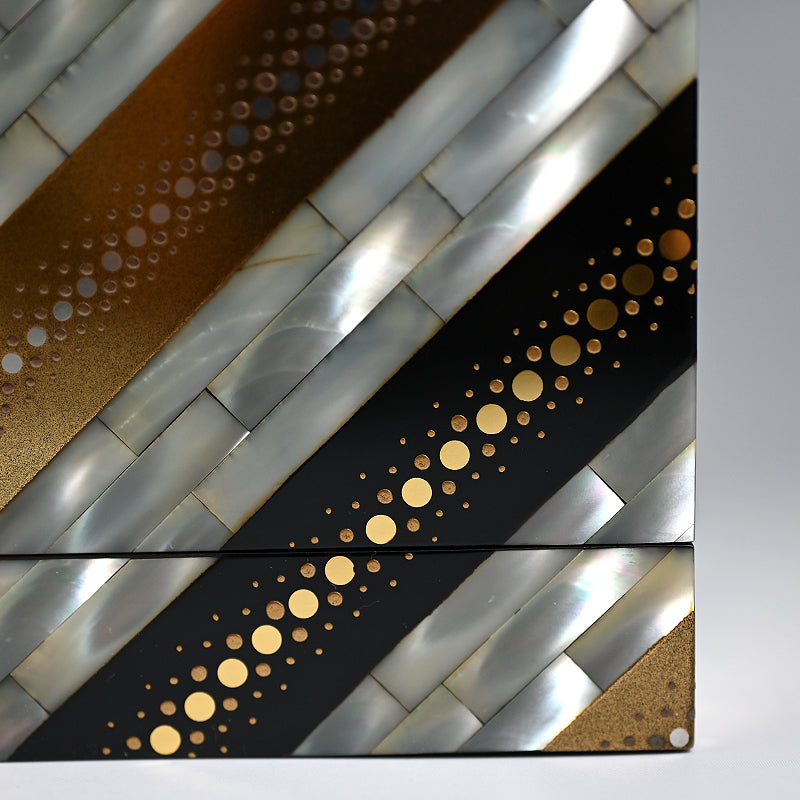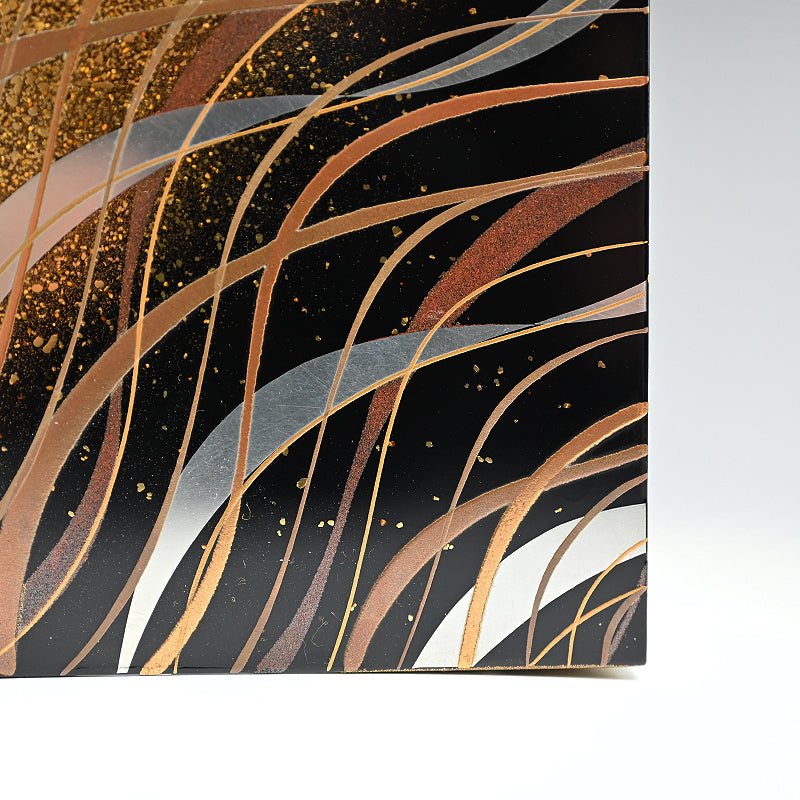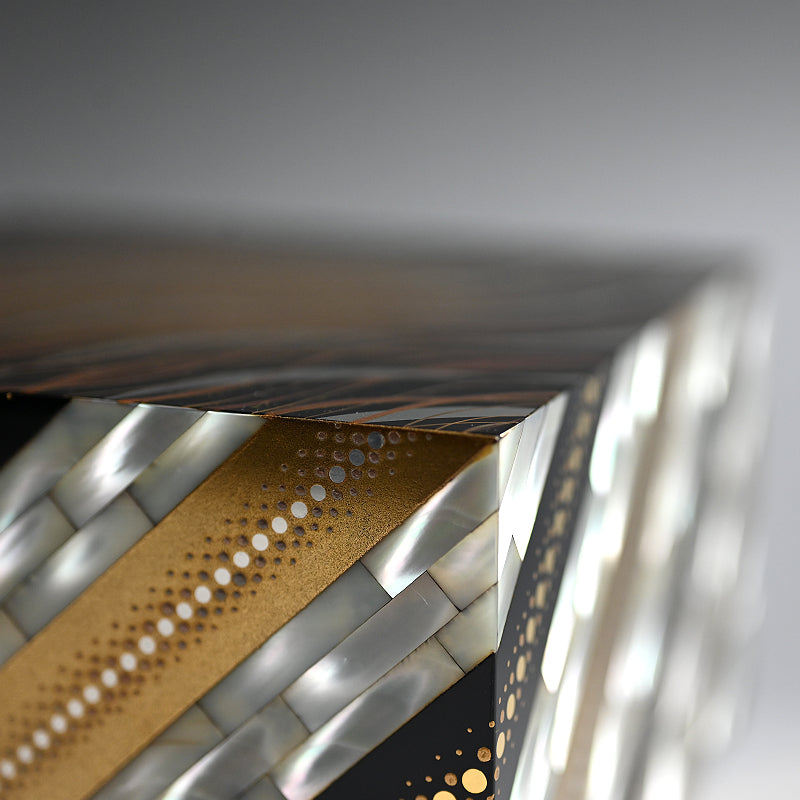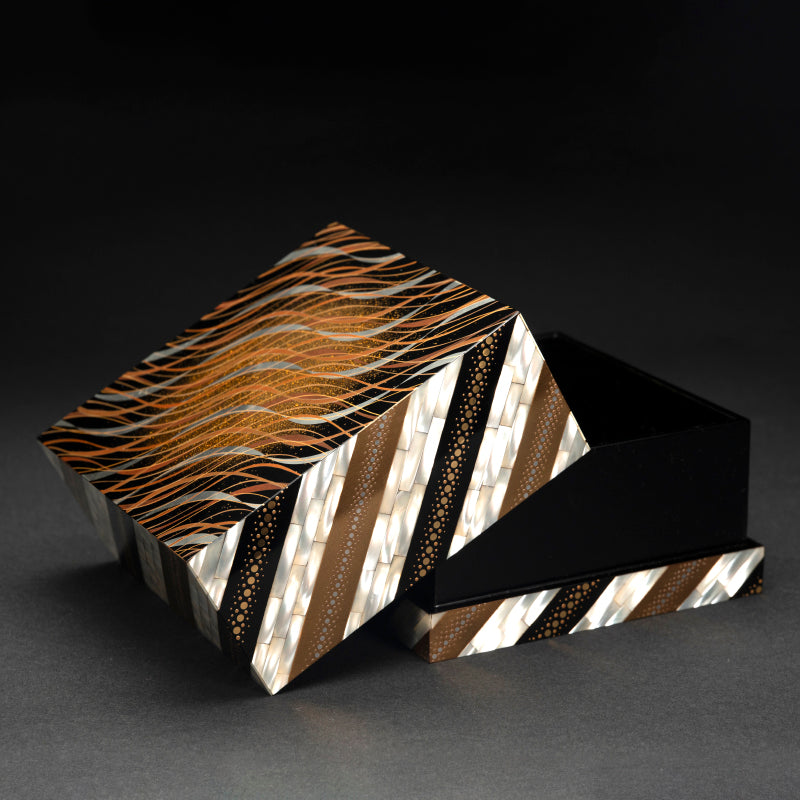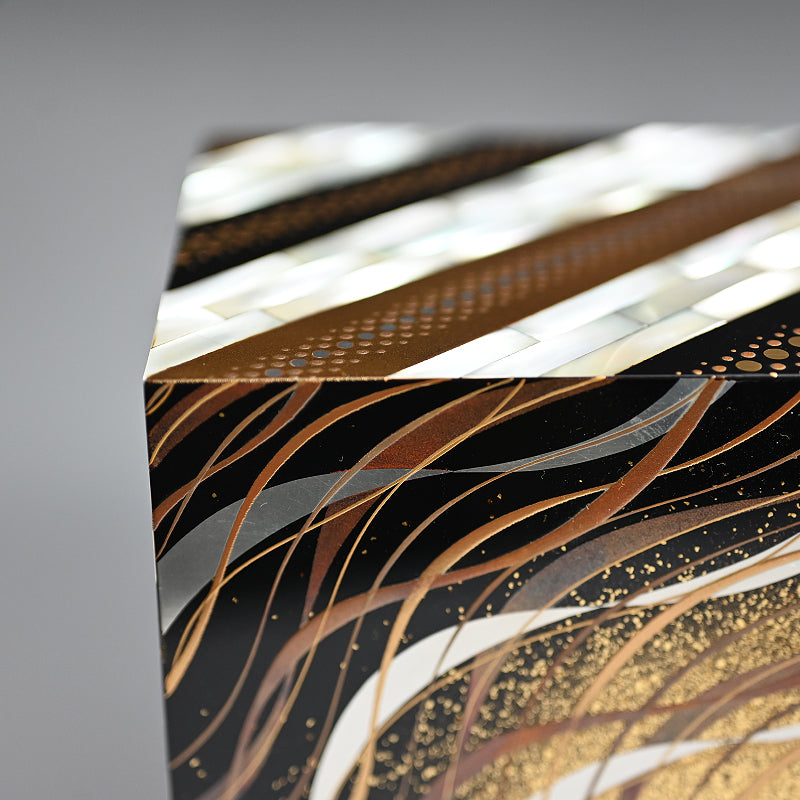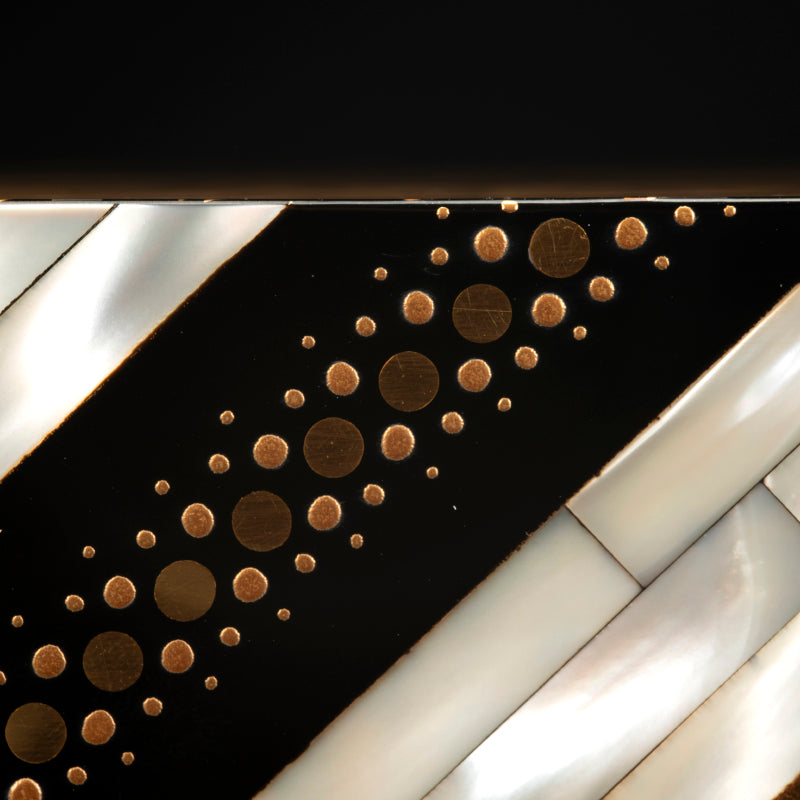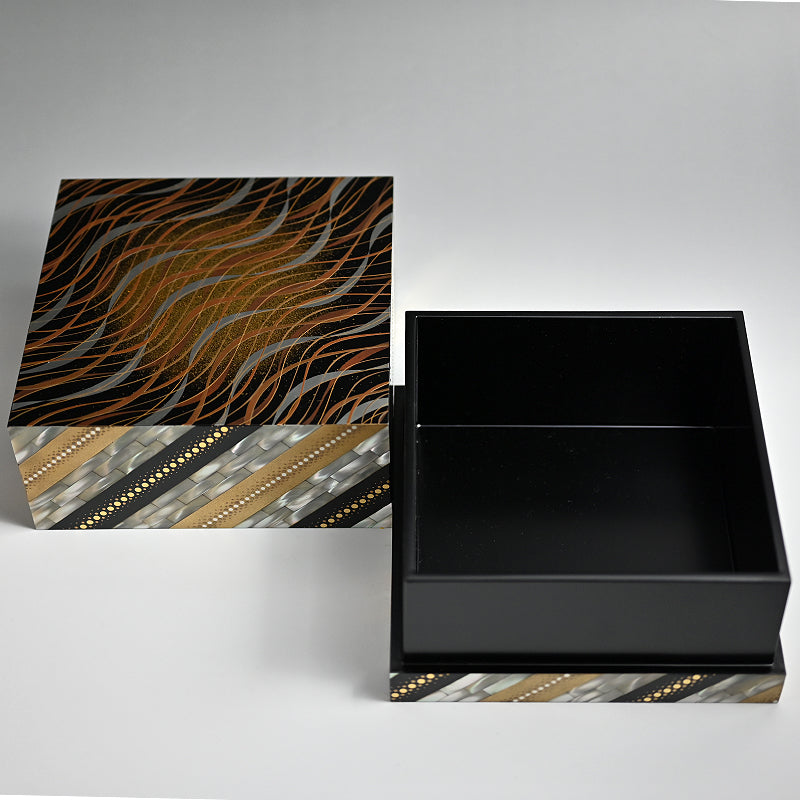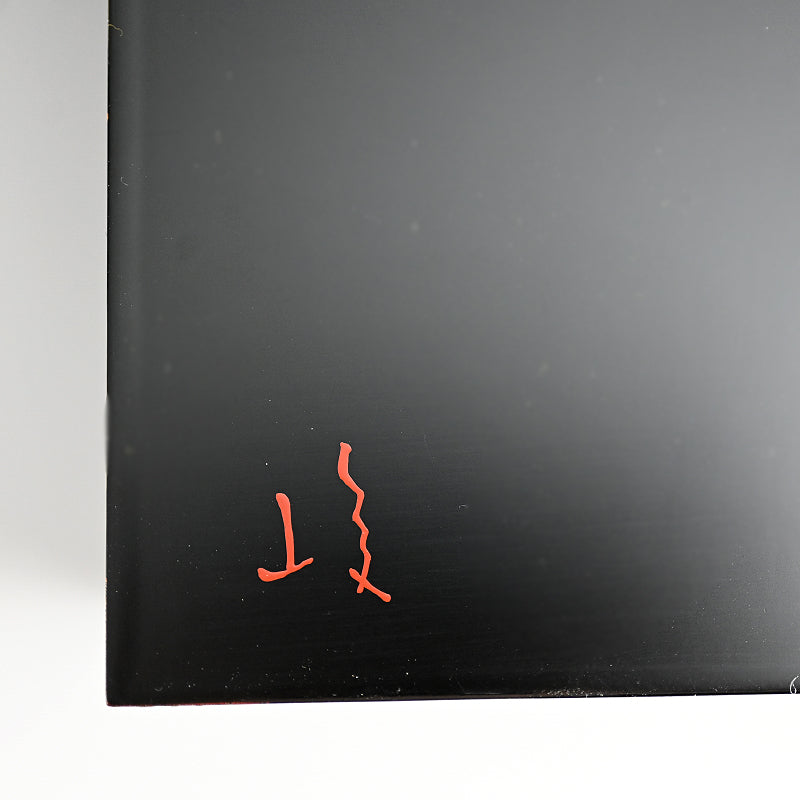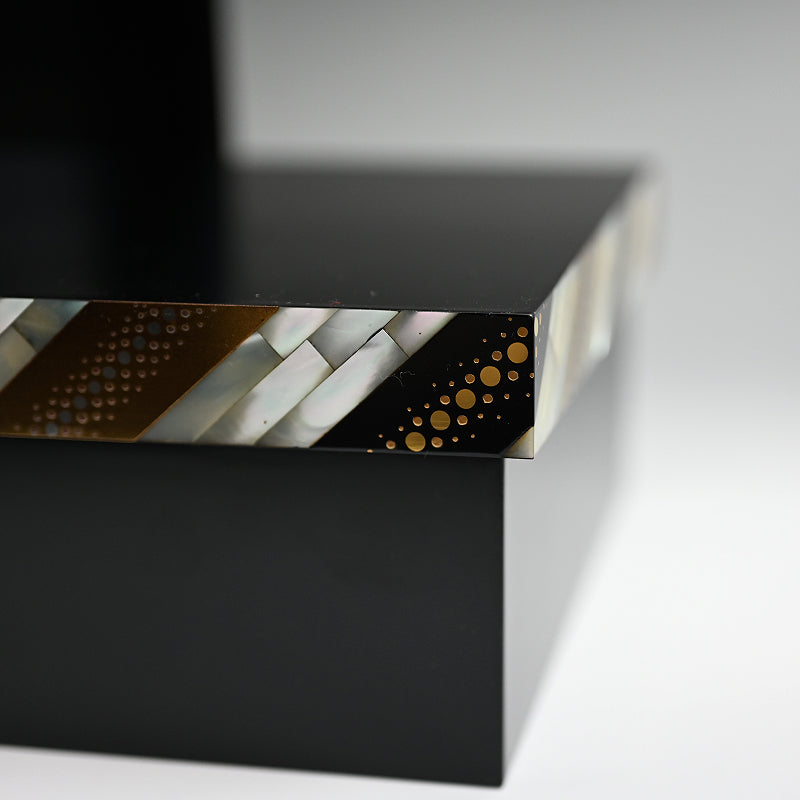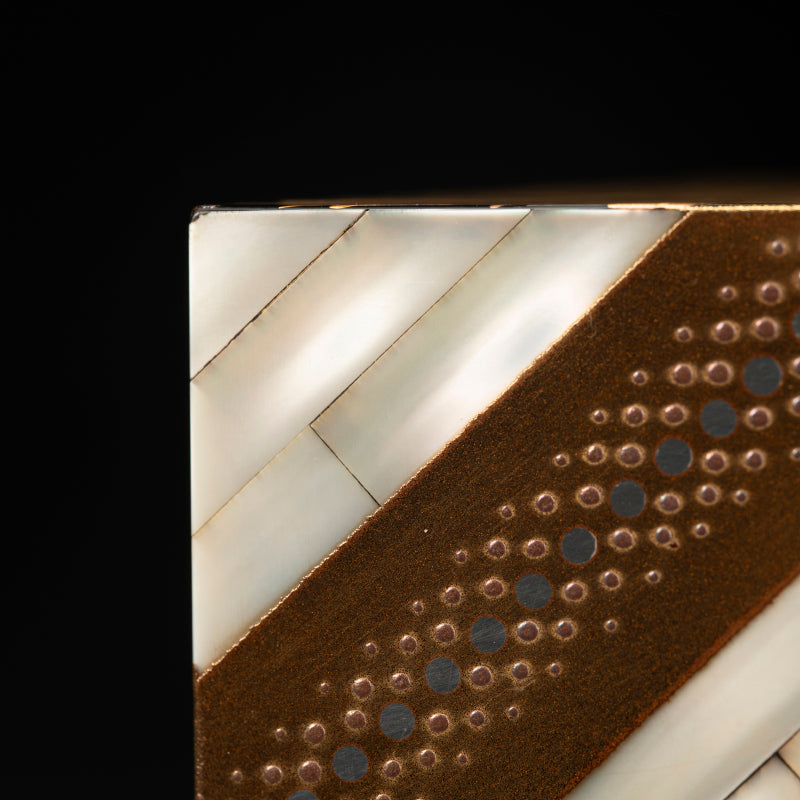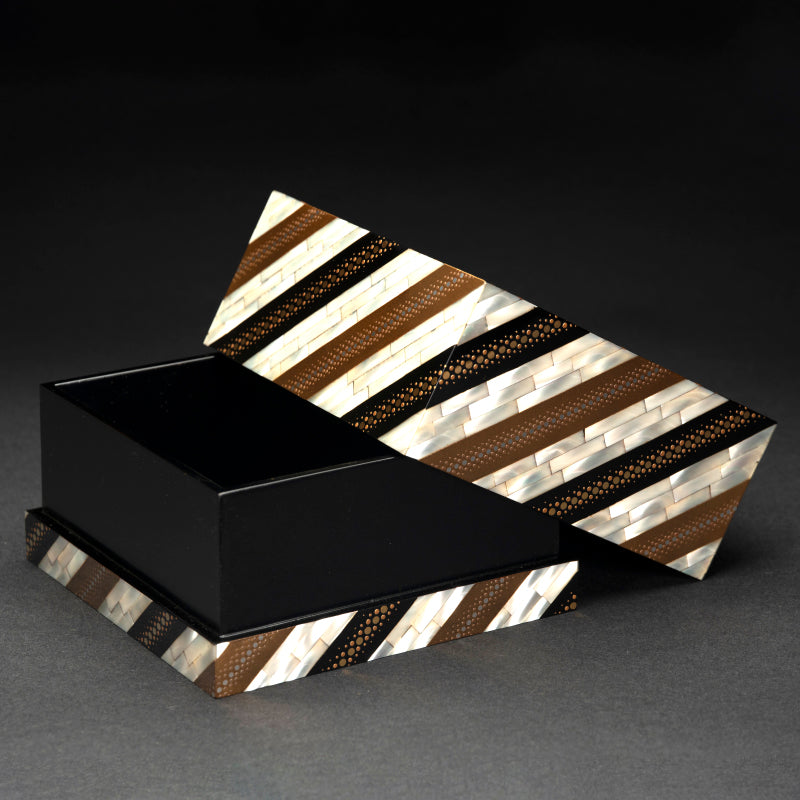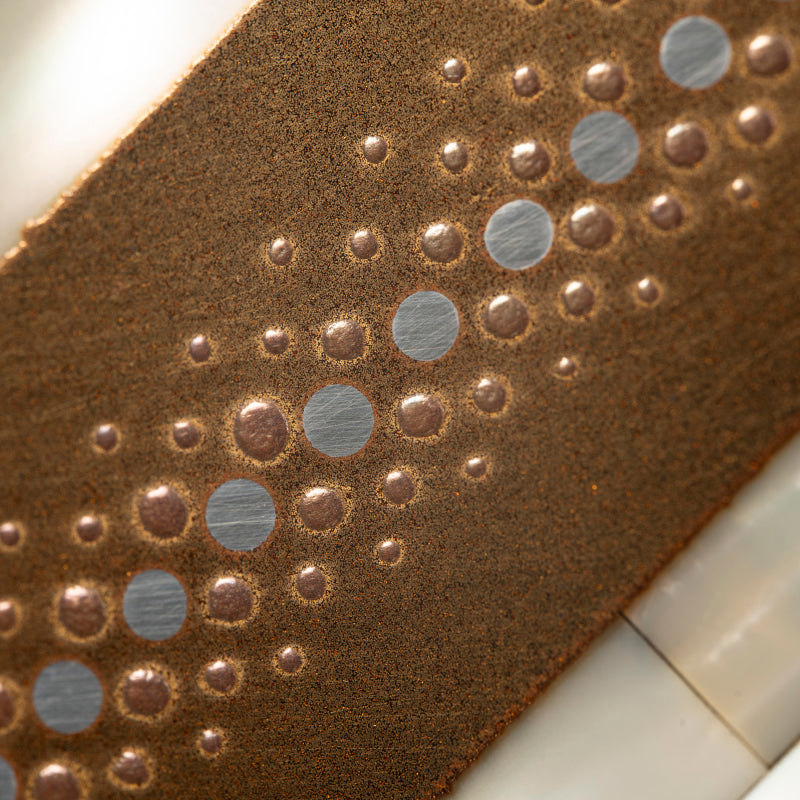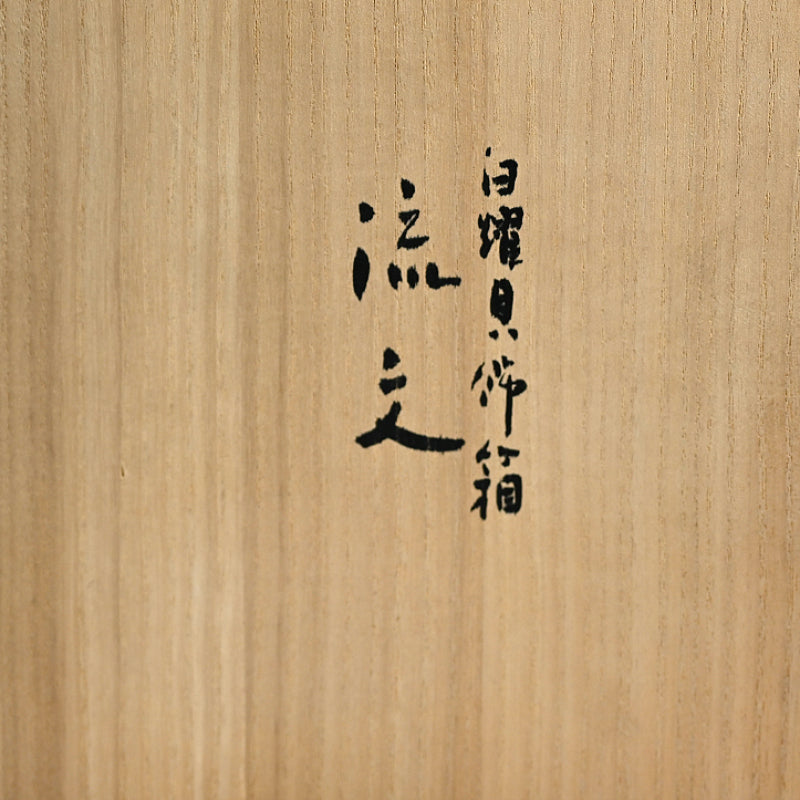1
/
の
23
Rippling Lacquer Box ー服部 峻昇 “白耀貝飾箱 流文”
Rippling Lacquer Box ー服部 峻昇 “白耀貝飾箱 流文”
Item Code: K741
税込。
受取状況を読み込めませんでした
Glimmering white shell striped with woven chord patterns under lines the sides of this shimmering lacquered box by Hattori Shunsho enclosed in the original signed wooden box titled Haku-Yogai Kazari-bako Ryumon (Ripples). The top of the box is covered in a design of inlayed metal and colored lacquer over a glistening gold orb like the sunlight reflecting off of water.It is 16.2 cm (6-1/2 inches) square, 9.2 cm (3-1/2 inches) tall and in excellent condition.
Hattori Shunshō’s (1943–2018) artistic legacy lies not only in his command of traditional Japanese lacquer techniques but in his deep engagement with geometry as a tool for expression and transformation. His works are a compelling dialogue between centuries-old craft and modern design language, particularly through his inventive use of form, line, and material. Geometry, in Hattori’s oeuvre, transcends mere visual structure—it becomes a conduit for philosophical exploration, capturing the cyclical rhythms of nature and the structured abstraction of modernity. The moon and the sun, seasonal transitions, and the interplay of light on water are rendered through a design logic that blends mathematical clarity with poetic nuance. Throughout his career, Hattori embraced technological innovation as a creative partner rather than a threat to tradition. He was part of a postwar generation of artists who benefitted from—and actively explored—the expanded palette of materials and techniques made possible by advances in industrial production and global trade. Acrylics, synthetic lacquers, and modern adhesives were not simply substitutes for natural materials but opportunities to reimagine lacquer as a dynamic, contemporary medium. Hattori’s aesthetic vision is marked by the tension and harmony between symmetry and asymmetry, organic and artificial. Repeating motifs—spirals, waves, radial patterns—suggest both natural growth and human-made order. His geometric forms are often softened by the reflective, almost ethereal quality of the materials he chooses, creating a visual experience that is at once precise and deeply emotive. In this way, Hattori’s work stands as a bridge between the rooted elegance of Kyoto lacquer tradition and the boundary-pushing inquiries of contemporary art. His practice reveals that the evolution of craft is not a departure from the past, but a reinterpretation of it, made possible by the artist’s willingness to engage critically and creatively with the tools of his time.
Public Collections: Tokyo National Museum of Modern Art, Kyoto National Museum of Modern Art, Kyoto City Kyocera Museum, Kiyomizu Sannenzaka Musuem, Kyoto International Foundation, Chanoyu museum (Hida Takayama), Sunritz Hattori Museum of Arts, Denver Art Museum
Hattori Shunshō’s (1943–2018) artistic legacy lies not only in his command of traditional Japanese lacquer techniques but in his deep engagement with geometry as a tool for expression and transformation. His works are a compelling dialogue between centuries-old craft and modern design language, particularly through his inventive use of form, line, and material. Geometry, in Hattori’s oeuvre, transcends mere visual structure—it becomes a conduit for philosophical exploration, capturing the cyclical rhythms of nature and the structured abstraction of modernity. The moon and the sun, seasonal transitions, and the interplay of light on water are rendered through a design logic that blends mathematical clarity with poetic nuance. Throughout his career, Hattori embraced technological innovation as a creative partner rather than a threat to tradition. He was part of a postwar generation of artists who benefitted from—and actively explored—the expanded palette of materials and techniques made possible by advances in industrial production and global trade. Acrylics, synthetic lacquers, and modern adhesives were not simply substitutes for natural materials but opportunities to reimagine lacquer as a dynamic, contemporary medium. Hattori’s aesthetic vision is marked by the tension and harmony between symmetry and asymmetry, organic and artificial. Repeating motifs—spirals, waves, radial patterns—suggest both natural growth and human-made order. His geometric forms are often softened by the reflective, almost ethereal quality of the materials he chooses, creating a visual experience that is at once precise and deeply emotive. In this way, Hattori’s work stands as a bridge between the rooted elegance of Kyoto lacquer tradition and the boundary-pushing inquiries of contemporary art. His practice reveals that the evolution of craft is not a departure from the past, but a reinterpretation of it, made possible by the artist’s willingness to engage critically and creatively with the tools of his time.
Public Collections: Tokyo National Museum of Modern Art, Kyoto National Museum of Modern Art, Kyoto City Kyocera Museum, Kiyomizu Sannenzaka Musuem, Kyoto International Foundation, Chanoyu museum (Hida Takayama), Sunritz Hattori Museum of Arts, Denver Art Museum
Share
